Reflections on my Camino de Santiago pilgrimage
During the spring and summer of 2023 I experienced some challenging life situations, several of which I wrote about in this two-part story. To sum it up: I was feeling ungrounded and with a sense of loss of my strong confident self.
To make matters even more intense, my professional life had become like a real-life episode of Black Mirror. During a medical leave of absence, due to a toxic work environment no less, I was notified that my position had been eliminated and as a result I was being laid off. A true example of a dogmatic culture where “growth mindset” and “model, coach, care” are scripted into talk tracks, performance reviews, and diversity, equity and inclusion campaigns, but people who advocate for accountability, integrity and respect (advertised company values) are conveniently eliminated.
I knew that if I didn’t change my environment during the months that followed I would ruminate and drive my already exhausted mental state into a frenzied problem solving marathon. So, I paused and listened. I opened myself up to outside signals that felt congruent with my internal compass and it was during this shift I heard for the third time (in a matter of months) someone recount their story of a Camino de Santiago pilgrimage.
What is the Camino de Santiago?
The Camino de Santiago, or in English the Way of St. James, is a network of pilgrims’ ways leading to the shrine of the apostle of St. James in the cathedral of Santiago de Compostela in northwestern Spain, where tradition holds that the remains of the apostle are buried. Created and established after the discovery of the relics of Saint James the Great at the beginning of the 9th century, the Way of St. James became a major pilgrimage route of medieval Christianity from the 10th century onwards.
In 1987 The French Way and the Northern routes in Spain were inscribed on the UNESCO World Heritage List because of their historical significance for Christianity as a major pilgrimage route and their testimony to the exchange of ideas and cultures across the routes. Since then, hundreds of thousands (over 300,000 in 2017) of pilgrims set out each year, traveling from their homes all over the world, to make their way to Santiago de Compostela. Most pilgrims travel the Camino by foot, some by bicycle, and many consider the experience a spiritual retreat from modern life. (Source: Wikipedia)
My Way
I decided to walk the French Way since it is the most popular route (traveled by 60% of pilgrims) and therefore services and accommodations would be more easily available. Traditionally the French Way begins in Saint John Pied de Port in France and ends in Santiago de Compostela in Spain for a total of 770 km / 478 mi and a suggested walking schedule of 33 days including two rest days.
Traveling from the western United States requires several flights, and potentially a second travel day, to reach Saint John Pied de Port in France. I allotted 38 days for my trip (including travel and rest days) and I was keen on reaching Finisterre, Spain, AKA “the end of the world”, which was 89 km / 55 mi beyond Santiago. With this in mind I adjusted my Camino pilgrimage to begin in Pamplona, Spain which is the third stop on the French Way itinerary, and this permitted me to dedicate three days at the end of my journey for Finisterre on the coast of the Atlantic ocean.
Why I Walk
My earliest memory of walking being a therapeutic part of my life was the summer I was 12 years old. My mom was always looking for ways to ship me off somewhere when school was out, and one of these places was the ranch where my aunt and uncle lived in Bandon, Oregon.
What I remember most about those summers is the freedom, adventure and sense of awe that I experienced each morning when I left the house to explore 240 acres of forests, pastures, a river, and the southern Oregon coastline. I was always accompanied by a pack of dogs, sometimes I was on horseback, but walking was my go-to mode.
Over two summers of my childhood, every day for a month, I walked outside for hours. Three years ago I visited the ranch, now the site of the New River Nature Center, and I retraced the steps I made during those summers. The experience was a “coming home” and marked a moment of clarity for me: Those early in life nature walks imprinted on me deeply and were the catalyst for walking to become a moving meditation that has guided me all my life.
For me walking is a fully immersive experience that includes movement, nature, and thought. When I walk I intend to “solve all the world’s problems, or at the very least my own” and walking has been a method for me to gain a deeper understanding of myself and how I interact with the world around me.
Preparing for Pilgrimage
I used my preparation time to remain focused on the journey ahead so that I could minimize worry, anxiety and problem solving in the other areas of my life. Prior to my Camino I had never walked with a backpack, nor had I walked more than 5 miles at a time for consecutive days in a row. These two resources helped in planning my Camino: the guidebook by John Brierly, A Pilgrim’s Guide to the Camino de Santiago, and the Facebook group Camino de Santiago all routes.
I focused primarily on my gear and packing list. Guidance suggests for the type of journey I would be walking that the backpack total weight should equal approximately 10% of your ideal body weight. With this in mind, and also the desire for simplicity, my goal was to travel as lightly and efficiently as possible. I bought my shoes and backpack at REI due to their expert service and refund and exchange policies; this helped me feel confident that I would end up with the best gear possible for me.
My plan was to do several “training walks” in full gear to mimic a day on the Camino, but logistically it was more of a challenge than I anticipated. I was living in Scottsdale, AZ at the time and the weather was extremely hot, so this prohibited me from walking outside for long periods of time. As a back-up I walked on the treadmill at the gym covering 5-6 miles at a time wearing my Camino gear. I also did several training walks while visiting Seattle, typically maxing out at 8 miles in a day due to time constraints, and I continued with my normal routine of several weight training sessions and yoga classes per week.
Most important was my mental preparation and the commitment to myself for how I would use the time to think through how I was feeling. This journey would be an experiment in placing my “ungrounded self” into a completely new and challenging environment for 30 days while thinking through some of life’s biggest challenges: relocating to a new city, my children becoming adults, the next evolution of my career, and the opportunity to reinvent my life. I had an opportunity to completely rethink how I approached my life – it was exciting and overwhelming.
On the Camino
I felt calm and excited about my journey, until the night before when I began to feel nervous and apprehensive. I questioned my spontaneous decision to go, if I had done enough research, and I felt pressure to return with all of my troubles solved. Stronger than these doubts however was a sense of curiosity and a longing for dedicated time and space to take care of myself.
It is difficult to summarize my experience on the Camino, and I suspect I will be thinking and writing about it for years to come. As a start, here is a “by the numbers” account of my experience:
- I walked between September 16 and August 15, 2023 – 30 walking days and 1 rest day.
- My walking route covered 443 miles.
- I traveled alone and estimated I walked 80% of the time by myself and 20% with others whom I met on the trail.
- I walked 60% of the time in silence – without the aid of music or other digital inputs.
- My backpack weighed 15 pounds, give or take depending on the amount of water and food I was carrying.
- My accommodations included 25 nights in shared rooms of 4 to 60 people (hostels) and 6 nights in private rooms.
- Most of the people I met were in age groups in their 20’s or 50’s and represented at least 10 different countries.
- There was a heat wave during the first 10 days and the temperature reached nearly 100 degrees every day.
- In the last week I had over 50 bug bites on my body, many located under the straps of my pack which were very bothersome!
- I experienced 0 blisters or injuries.
A typical daily schedule for me:
5:00-6:00am – Be woken up by other people in the room, get up and get ready in the dark
6:00-7:00am – On the trail in the dark, no coffee or breakfast
9:00am – Walked 5-7 miles, stop for breakfast
1:00pm – Walked 12-14 miles (total), stop for lunch
3:00-4:00pm – Walked 18 miles (total), find an Albergue (hostel) with available bed
4:00-8:00pm, Make bed, shower, wash clothes, organize pack for next day, write / nap / visit with other pilgrims
8:00-9:00pm – Dinner
9:30pm – Go to sleep (ear plugs and sleeping mask were necessities!)
Here are the towns and villages I stayed in along the Way:
Pamplona – Puenta de Reina – Estella – Luquin – Torres del Rio – Logrono – Ventosa – Azofra – Granon – Belorado – San Juan de Ortega – Burgos – Hontanas – Boadilla Del Camino – Carrion Des Los Condes – Ledigos – Bercianos Deal Real Camino – Reliegos – Leon – Villavante – Murias De Rechivaldo – Foncebadon – Ponferrada – Villafranca del Bierzo – O Cebreiro – Tricastela – Barbadelo – Ventas De Naron – A Peroxa – A Rua – Santiago de Compostela
Memorable Moments
The entire journey will remain a very special memory, but there are several key memories stand out:
After an early morning start through a section nicknamed “the knee-wrecker, ” I entered the first village to find pilgrims Anna and Erin waiting for me at a cafe. They had taken a taxi ride to save their knees and timed it so that we could all have breakfast together.
On the 11th day the ache I felt with each step during the last five miles into Burgos. And, my rest day the following day where I visited the Museum of Human Evolution and The Cathedral of Saint Mary. (After sleeping 10 hours in an air conditioned private room!)
The 17 miles and 5,000 foot climb to O Cebreiro and the breathtaking beauty of the Galicia region along the way.
How long 30 days felt at the start in contrast to how I longed for more time and savored each day during the last week.
Making it a regular occurrence to eat two breakfasts whenever possible and dessert nearly every night. (I wasn’t a fan of the local cuisine and getting enough daily calories was a challenge for me.)
An immediate sense of community and belonging with other pilgrims. Buen Camino!
Getting into a deep conversation with someone I met less than an hour earlier.
Walking 20 miles in a day and feeling like I could keep going, happily.
The beautiful historic villages and the culture of the Spanish people.
The simplicity of carrying everything I needed on my back.
The gratitude I felt for my family and friends back home.
The End of a Journey
After reaching Santiago on September 15th, I shared a car with two fellow pilgrims and we made our way to Finisterre on the coast. I reserved a room near the ocean and for a few days I rested and reflected on my journey. Reading through my journal entries I noticed an evolution over the previous 30 days on the Camino:
Days 1-12 were for breaking down, a deconstruction process
Days 13-24 were for re-building and optimism
Days 25-31 were for being in gratitude and enjoying the journey
After several days at the coast, and after a month of feeling tired, hungry and sweaty, I was eager to return home. It took two days of travel before I arrived back in Scottsdale. The first week home I dreamed each night of being on the Camino. Three weeks home now, I continue to wake up early and several days a week I hike or walk first thing in the morning.
The biggest challenge upon returning home is keeping the spirit of the Camino alive and not reverting back to old habits or patterns that were keeping me from living fully in my integrity and from achieving my dreams. I know that this will be a work in progress and I am all in.
I continue to learn and grow as wisdom from the trail makes its way to me, and I keep grounded with this realization: Of all the amazing things that I discovered on my Camino journey, the most important and my favorite is my Self.
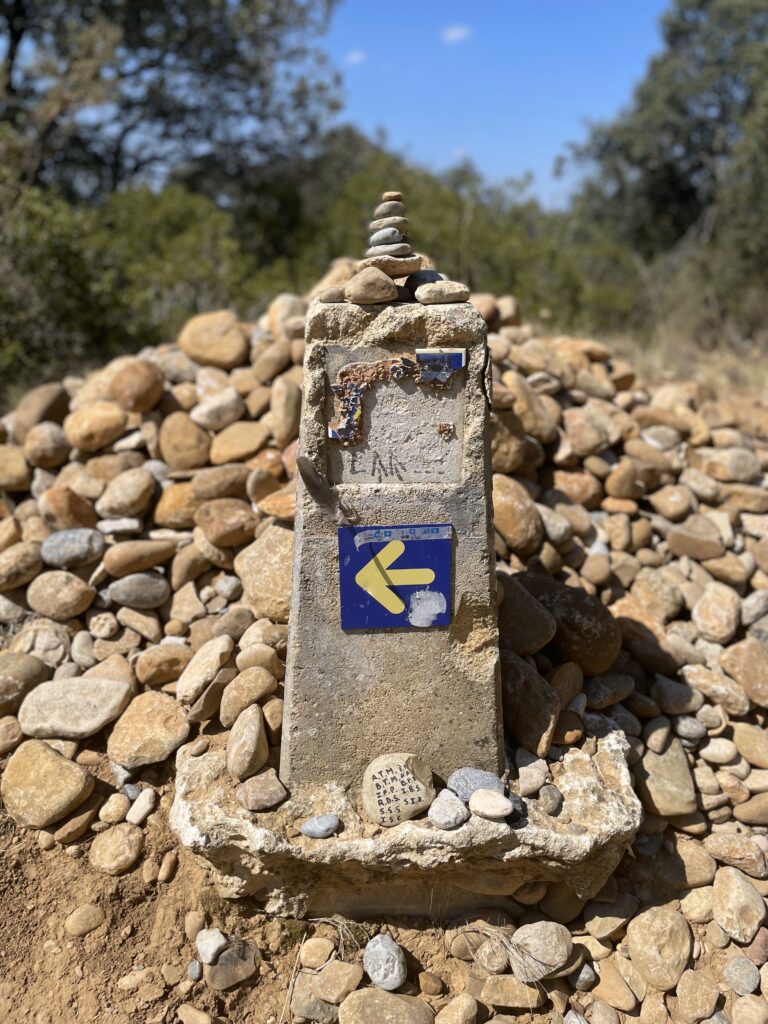
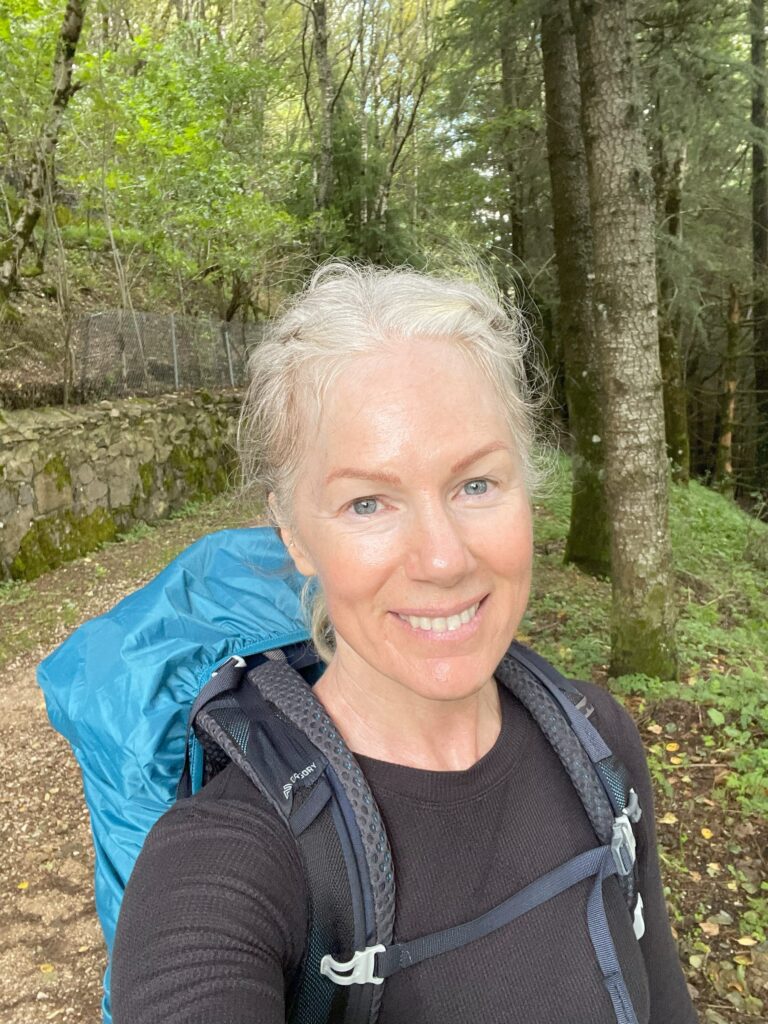
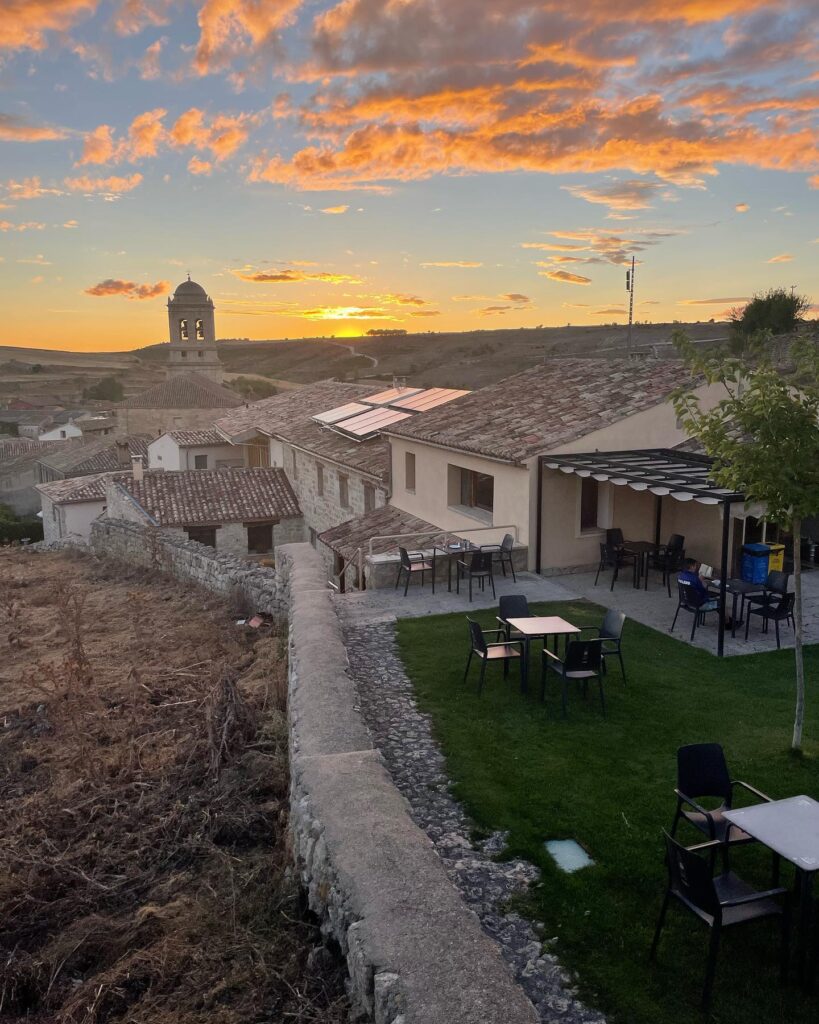
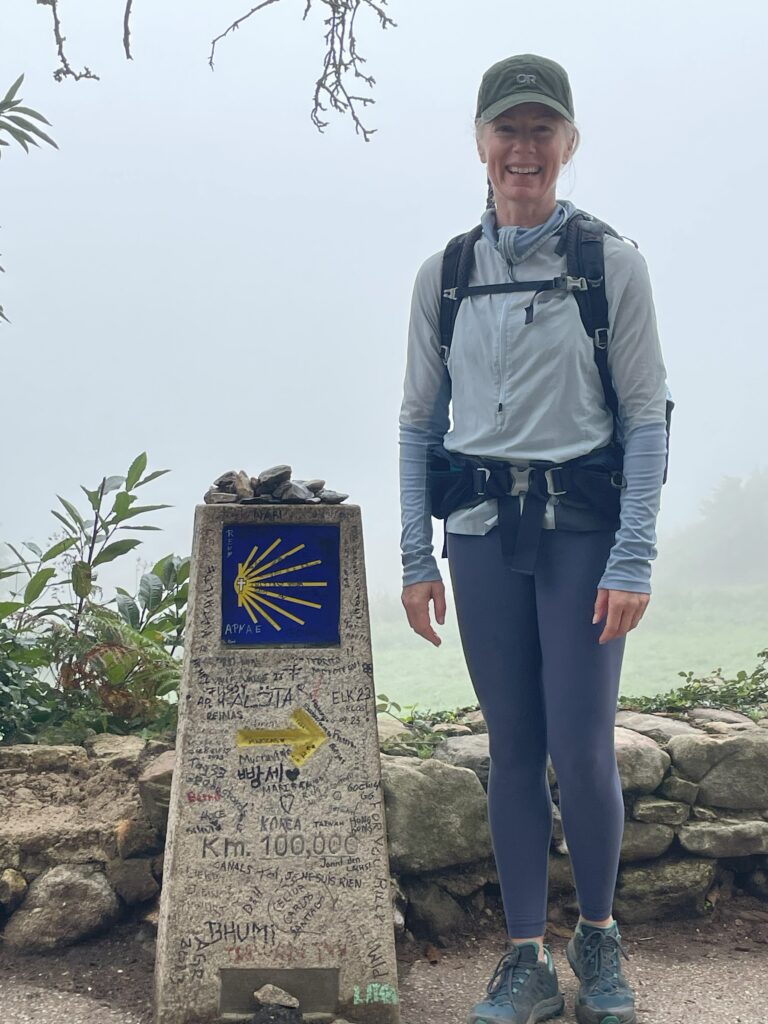

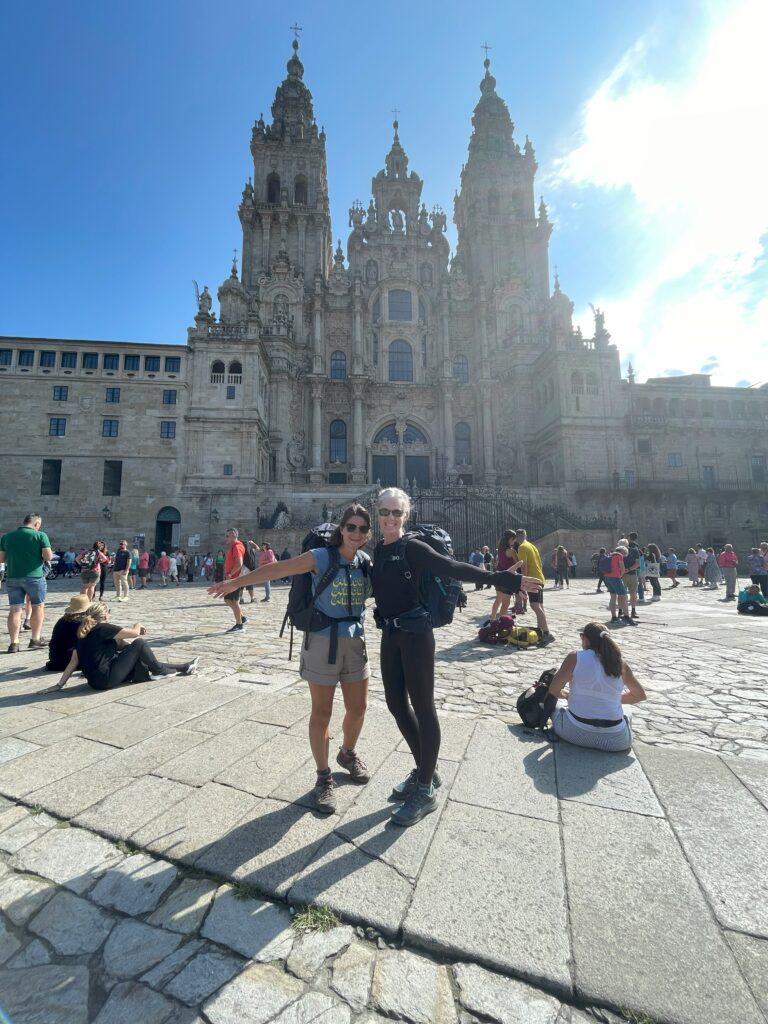

You’re a beast! That by the numbers section is a great peak into your journey. It’s clear your internal compass is dependable and I look forward to watching where it takes you next.
Thank you for your unconditional support. It was interesting to notice what my compass was steering me away from – clearing the way for what’s next!
I love all of this and can’t wait to see you soon.
I am looking forward to catching up on all of life’s twists and turns.
Love reading this. It was an absolute pleasure to meet you on the way, you’re an inspiration.
I have fond memories of our time together and I hope that we have the chance to connect again in the future.
An amazing accomplishment! Congratulations’